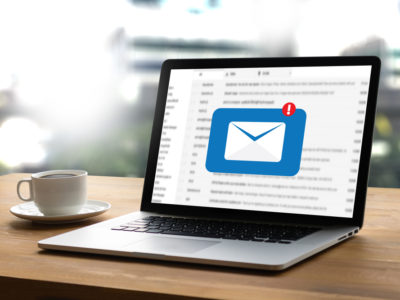When it comes to marketing channels, brands are always on the lookout for optimization practices that drive higher returns. Studies show that email marketing still provides the best ROI when compared to other digital channels. But, how do you reap the 3800% ROI that top marketers experience? First, you need to get your emails opened.
No matter how accurate your targeting is and how convincing your email content is, if your emails aren’t getting opened, then your compelling brand message is going to waste. Average open rates across all industries is somewhere around 25%, so if you’re not surpassing that, maybe it’s time to rethink your strategy.
But, What’s the Secret?
There are a bunch of proven strategies you can try, but the holistic secret to improving your email open rates is actually pretty simple – humanize your strategy. Behind every email opened is a human being whose curiosity you piqued, whose interest you captured.
Is it really that simple? Just be human? Well, it can be. Here are some tips you can follow to “humanize” your email marketing campaign and rise above the noisy environment that is a recipients inbox:
-
Pick the Optimum Time and Day to Send your Emails
Send your emails on the day and time that your target recipients normally check and read their emails. If your recipients are mostly professionals and executives who work at a regular 9-to-5 office, then you may want to send it in the morning when they normally go through their emails.
However, you may also need to consider how most professionals will only open and read the most important emails at the start of the week, so there’s a chance that they’ll skip your marketing email and forget about it for the rest of the week. As such, Tuesday after 10:00 AM may be the most opportune time.
A/B test your email delivery times to determine the optimum day and time to send your emails to help you study and understand your recipients.
-
Send from a Person, Not a Company
A recent study showed that 64% of email recipients read an email because of who it’s from. According to a Litmus survey, the sender name is the first thing recipients look at before opening an email.
An email from a company name can get marked as advertising email immediately. But, if it’s from a person, a reader would think twice before deleting an email and passing it off as marketing email.
If an email is from a person who works in your company, you’re making it seem more personal, and it’s more likely to get opened. Include a signature at the end of the email that gives the recipient an idea about who that person is and their role in your organization.
-
Write to One Person, Not Your Entire List
Your email is a personal channel where your colleagues, friends, and family members reach you. The same goes for your recipients.
Since their email address is private and personal, getting emails that are clearly written for hundreds or thousands of people can give them the impression that it’s spam.
Writing to one person not only breeds familiarity, but also shows your email recipient that you have carefully considered whether the specific message is for them. Personalization will go a long way towards improving your email open rate.
Don’t hesitate to use their first name. An Experian Marketing Services study found that using the recipient’s first name in the email subject line can increase email open rates by 29.3% on average. The improvement is even more significant in the travel and consumer products market at 40.8% and 41.8%, respectively.
-
Create a Compelling Subject Line
Your subject lines can greatly influence your email open rate. Just think about how you read your emails. After checking who it’s from, you read the email subject line. If it’s something you think is important or interesting, you open the email and read them.
Make sure that your email subject line stands out! You don’t want to be regarded as white noise by your email recipients. Write a compelling subject line that piques your recipient’s curiosity. A great way to do this would be to tell them exactly what the benefit of opening your email is.
-
Showcase Your Personality
People’s inboxes get cluttered with a multitude of content and promotional messaging on a daily basis. So, it’s normal for recipients to scan through their emails looking for something that’s either highly-relevant or unique. One of the best ways to grab a user’s attention is to inject a little personality into the mix.
Most marketing subject lines use stale, generic language that does the opposite of humanize the message. If you’re going against the grain by speaking to them like a human being with a personality, that’s going to differentiate your message and make it stand out.
So, don’t be afraid to use humor, tell a story, or even use emojis to showcase your brand’s human side. In a world gone automated, it’s always nice to know that you’re talking to someone real.
Bonus Tips for Improving Email Open Rates
-
Look at your data
Data analytics tools enable marketers to gain insights into the strategies that work and fail, how many emails are successfully delivered, which emails have higher open rates, which ones are immediately being deleted, and who’s unsubscribing to your email list, among many others.
If you’re using a marketing automation platform, then this information should be available for your utilization. Look at them, study them, and analyze them!
If your email open rate is low compared to industry standards, then you may want to look at other metrics such as deliverability. Are they even getting sent, at all?
-
Freshen up your email list
This brings us to another trick that some email marketers fail to do. You’ve grown your email list phenomenally over the years, but are you sure the email addresses you’ve gathered are still working?
People change email addresses from time to time, and employees may have resigned from their positions, or they simply might not be interested anymore.
Verify and clean up your email list. Remove email addresses that bounced, as well as subscribers that have stopped engaging with your emails for the last six months. But, before you delete them from your list, send a re-engagement email as a last-ditch effort to re-engage them.
-
Optimize for every screen size
Nowadays, users open their emails on multiple devices. Studies show that users who open their emails on a mobile device can be anywhere from 15% to 70%, so you need to ensure that your emails are responsive to any device and screen size—from the smallest smartphone to the largest desktop monitor. Use responsive formatting and loadable media when optimizing your emails.
You should also consider that email subject lines are usually cut off when they’re opened or viewed on smaller screens. Count the characters in your email subject line. You don’t want ellipses to replace the copy you carefully crafted just because it’s too long.
-
Trim down your email subject lines
The character limit for email subject lines varies per email client and device. To stay within the limit of a wider range of devices and email clients, do your best to write a subject line that’s 50 characters or less.
If a huge percentage of your subscribers are mobile users, then make sure to stay within 25 to 30 characters, as an average mobile device can only fit 4 to 7 words.
Every business’ audience is different. Look up the top email clients that your subscribers are using and A/B test your email subject lines to determine the optimum length.
-
Use catchy email subject lines
Your email subject line not only needs to be short but also catchy and descriptive! With just a few words, let your email recipients know what they can expect to find when they open your email.
You can also pique their interest and curiosity or add a bit of humor to encourage them to open your email. You should also be using actionable words to help drive the message home.
-
Adhere to anti-spam standards
One of the worst things that can happen is for your email to end up in the spam filter. Nobody opens their spam folder!
More importantly, you don’t want your subscribers to think that your business is unreliable and “spammy.” Most email marketing automation platforms provide anti-spam guidelines.
Avoid sending cold emails and make sure that your subscribers have opted into your email list and include a link or button where they can opt out. Ask your subscribers to whitelist you by adding you to their contacts list.
Avoid words that trigger the spam filter such as “big bucks,” “earn per week,” “free money,” “free cash,” “MLM,” “no credit check,” and “winning.”
-
Perfect your timing
Some surveys show that Thursday is the best day to send an email, and some say it’s Friday. Another study even claimed that 3:00 PM is the best time to send marketing emails, while some suggest Tuesdays, after 12:00 PM.
Studies may show different results and have different recommendations, but one thing’s for certain—timing is key.
Think of it this way. At the other end of your email is a human being who may be too busy with their daily tasks to even bother opening an email that is presumably unimportant.
Test your emails to determine the best time and day for specific audience segments in your list.
-
Create awesome content – consistently!
So, you’ve implemented the tricks above and managed to improve your email open rates. It doesn’t end there. In fact, the battle has just begun.
Sending even a single low-value email may cause your recipient to unsubscribe from your email list or immediately delete emails from you henceforth. Highly valuable and entertaining content will help you increase brand awareness, engage your customers, and grow your business.
The Secret’s Out!
Once again, the secret to improving your email open rate is to humanize your campaign. Think like a user and put yourself in your recipient’s shoes. Of course, you need to understand them well, so it’s important that you effectively research your buyer personas to determine what motivates them. This will help you segment your list to tailor your message to each segment and further individualize your emails.
The bottom line is that you need to show there’s a human being behind every email sent and received. Write from a person to another person and not like some sales-hungry company urging them to buy their products. The idea is to build a relationship before trying to “make a sale”.






